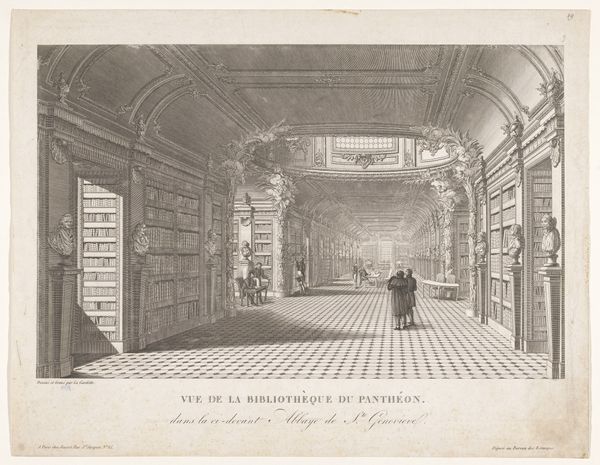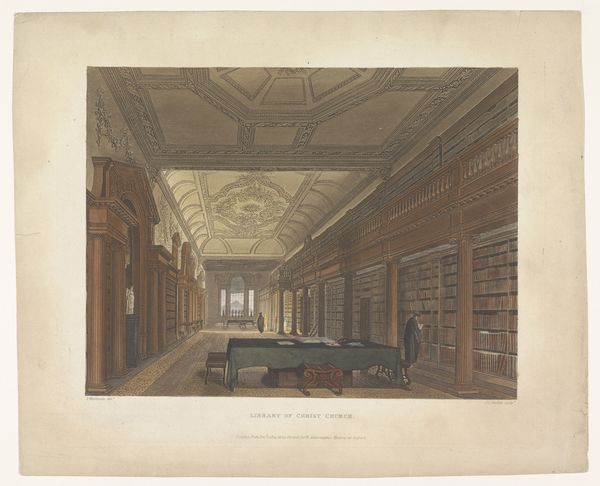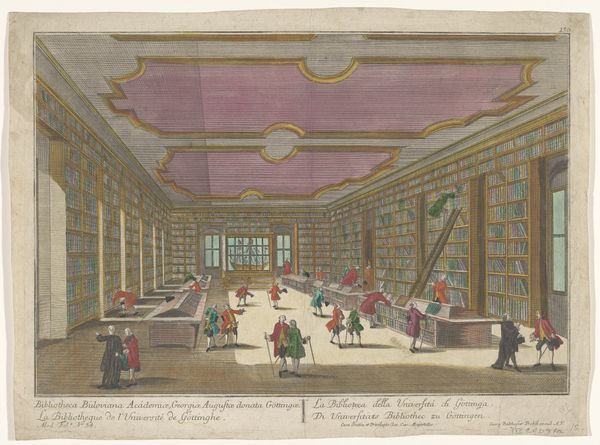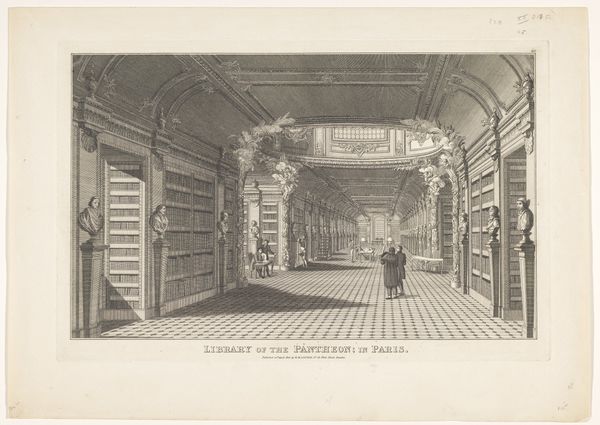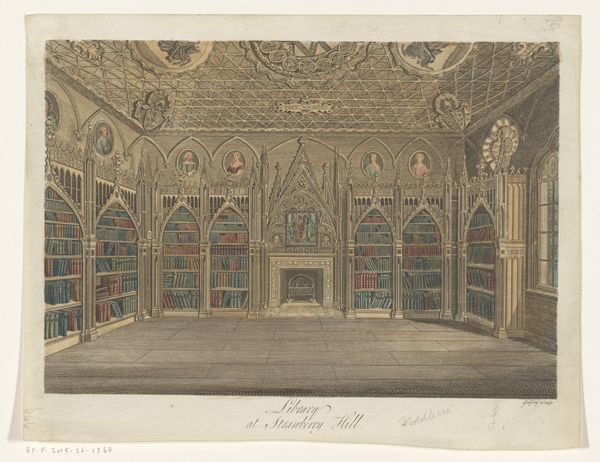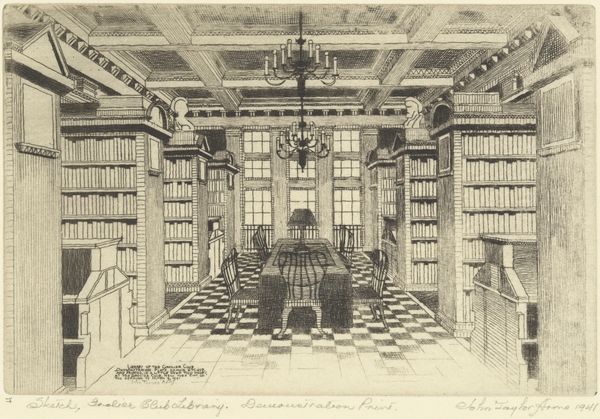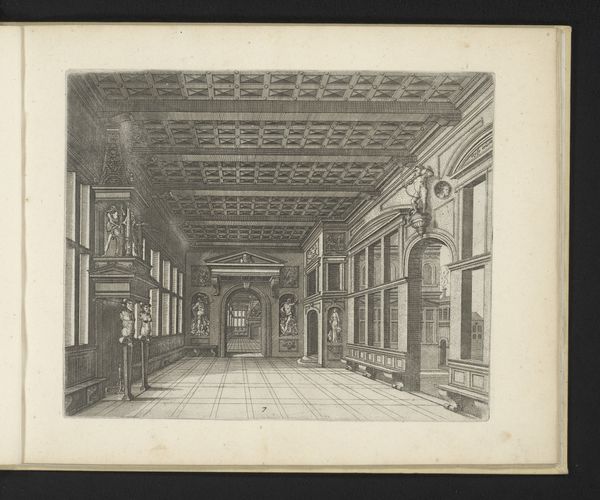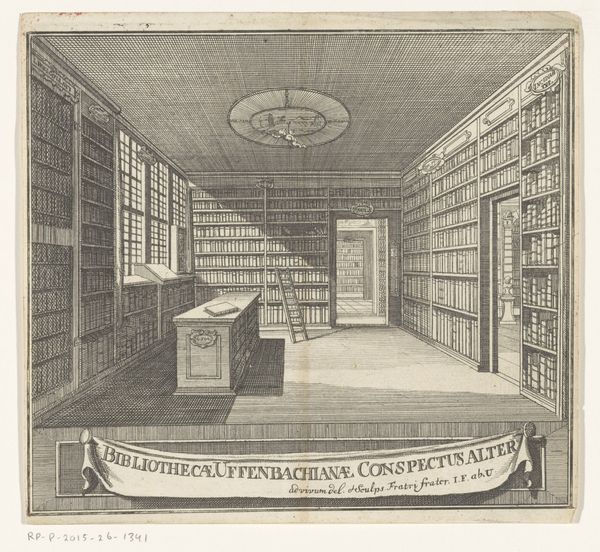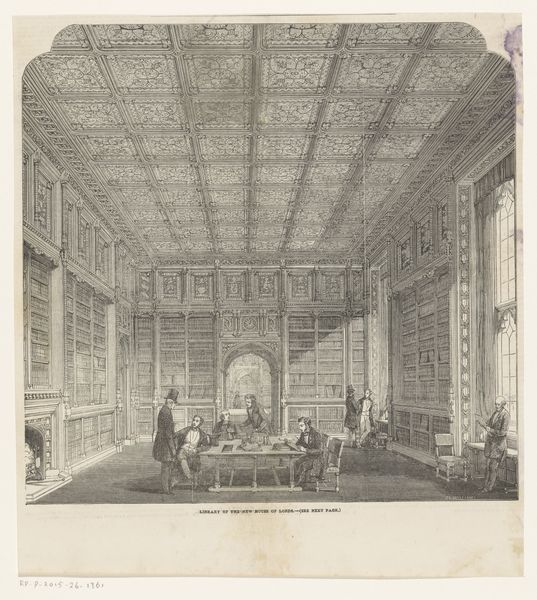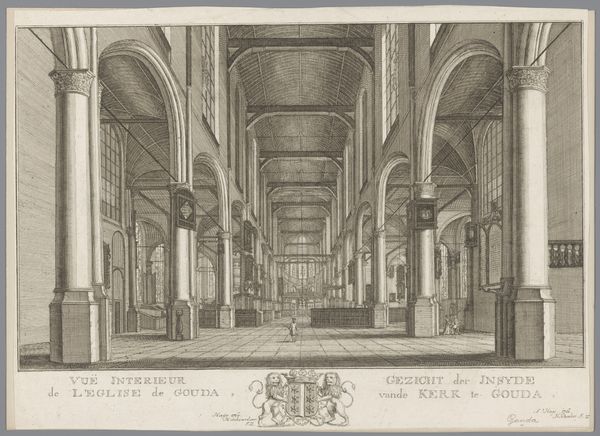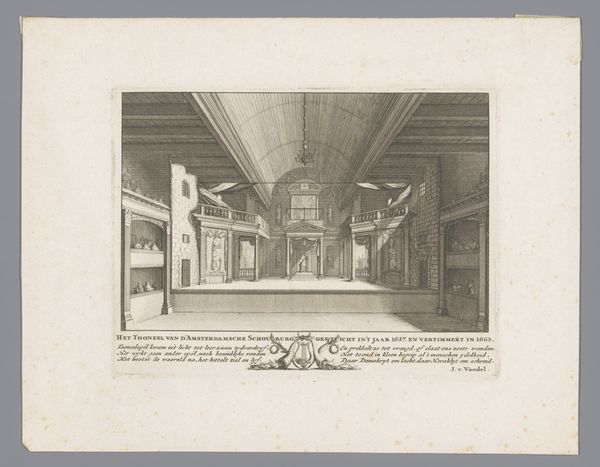
Bibliotheek van de abdij van Sainte-Geneviève te Parijs 1773
0:00
0:00
drawing, engraving, architecture
#
architectural sketch
#
architectural and planning render
#
drawing
#
neoclacissism
#
architectural modelling rendering
#
architectural diagram
#
architectural plan
#
architectural design
#
perspective
#
architectural section drawing
#
architectural drawing
#
architecture drawing
#
architectural proposal
#
cityscape
#
engraving
#
architecture
Dimensions: height 365 mm, width 472 mm
Copyright: Rijks Museum: Open Domain
Curator: This print from 1773 is titled "Bibliotheek van de abdij van Sainte-Geneviève te Parijs," or "Library of the Abbey of Sainte-Genevieve in Paris." Pierre Claude Delagardette created it. What do you think of it? Editor: It has this hushed, almost echoing quality, despite being a still image. The lines draw you right down the center, diminishing the figures within—making them feel somewhat insignificant. Curator: The abbey library, conceived during a time of growing secular knowledge, presented itself as a center for study that reinforced classical ideals. Consider the perspective, its implication of limitless, perfectly categorized information accessible to those privileged enough to enter. Editor: Privilege is a strong throughline here. Libraries are meant to be democratic spaces of learning, but access, particularly in the 18th century, would have been sharply restricted by social class and gender. I notice the many busts displayed above the books—men, surely—a visual assertion of authority and tradition. Curator: Indeed. The busts stand as symbols of wisdom and tradition, a very specific tradition that the monks wished to emulate and continue through the collection of texts housed in this architectural space. The space itself, with its repeated arches, emphasizes structure and order. Editor: It is definitely trying to convey order! Even the black and white checkered floor becomes less decorative as the drawing leads our eye to infinity—I feel almost lost in its depths despite all the visual indicators of established canon. How revolutionary was that, in its time, to make available what had before been only controlled whispers? Curator: Well, that controlled release of information is something we should keep in mind. The neoclassical style further links it to the ideals of the Enlightenment, framing the era as a rebirth of classical knowledge after the supposed 'dark ages.' These men aimed to cultivate a space of 'enlightened' scholarship. Editor: And to do it within a religious framework, a fascinating blend of progressive thought and entrenched power structures. So the Abbey library projects the cultural memory of knowledge. Its power lies in the potential to shape future thinking through access and established tradition. It does, for me at least, challenge the current cultural narratives. Curator: Yes, the weight of cultural memory indeed, shaping, directing and, perhaps, even limiting access to a complete understanding of humanity’s history. It prompts us to critically examine what we accept as established narratives and who gets to define them.
Comments
No comments
Be the first to comment and join the conversation on the ultimate creative platform.
